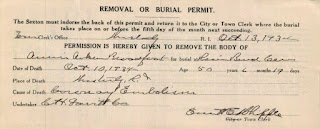Prickly Fall: Edward Stewart's House
Ever since the summer of 2004, when I went in search of information on my Stewart family who lived in North Stonington, Connecticut, I have been in love with the story of Edward and Rebecca (Noyes) Stewart. They were my 3rd great grandparents and my great grandfather, Charles Edward Stewart's grandparents.
The History of Stonington by Richard Anson Wheeler (the second compiled genealogy I owned), tells me that "all that knew him loved him."
What could be more important than that?
| From the History of Stonington (CT) page 607 Stewart Family found in an out of copyright Google Book and my copy in print. |
They tore down the house and then the cemetery was endangered. But, we found who held the deed and they restored the cemetery. Today, the place where the house stood is a new housing development but The Stewart Hill Cemetery is safe.
What did Charles Edward Stewart inherit though his father, Dudley Wheeler Stewart from the house of Edward and Rebecca? It took two probate records to be sure.
Think about it: the desk in my own parent's living room came from this house!






























